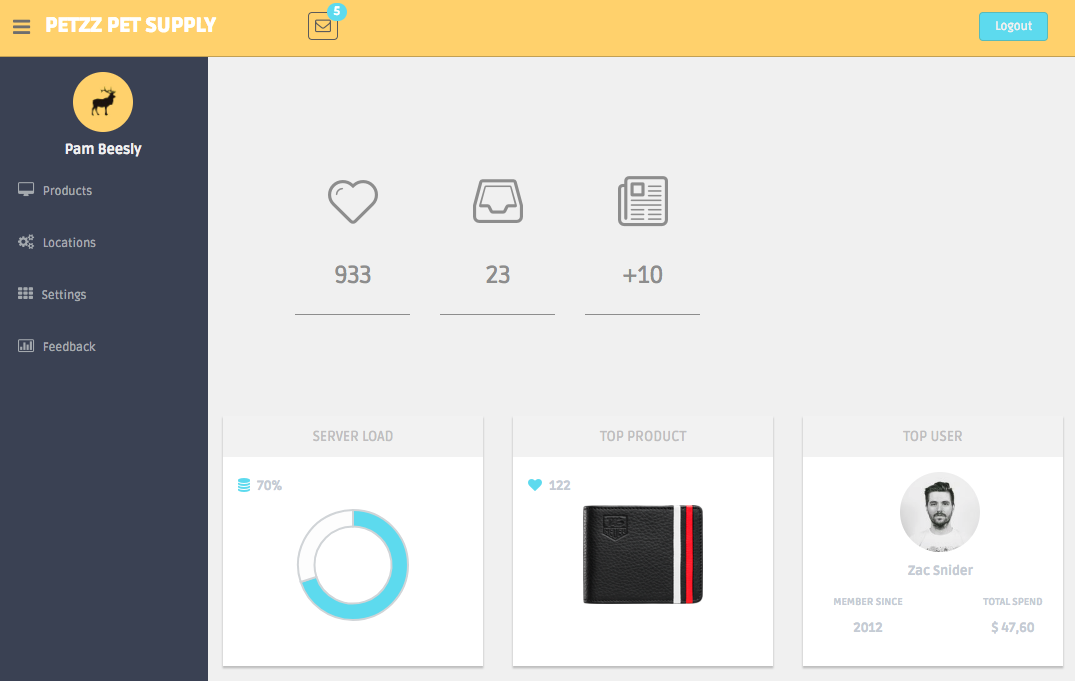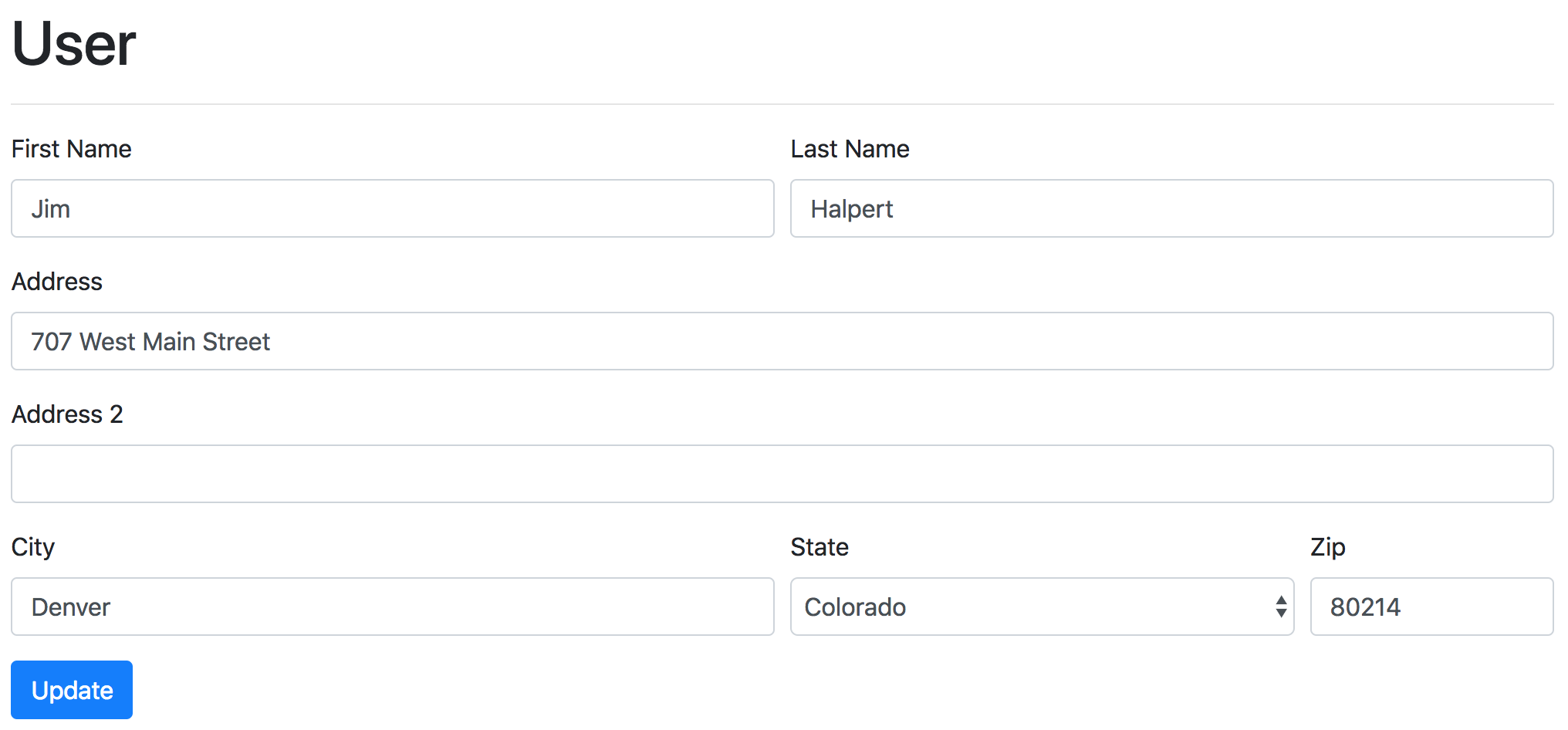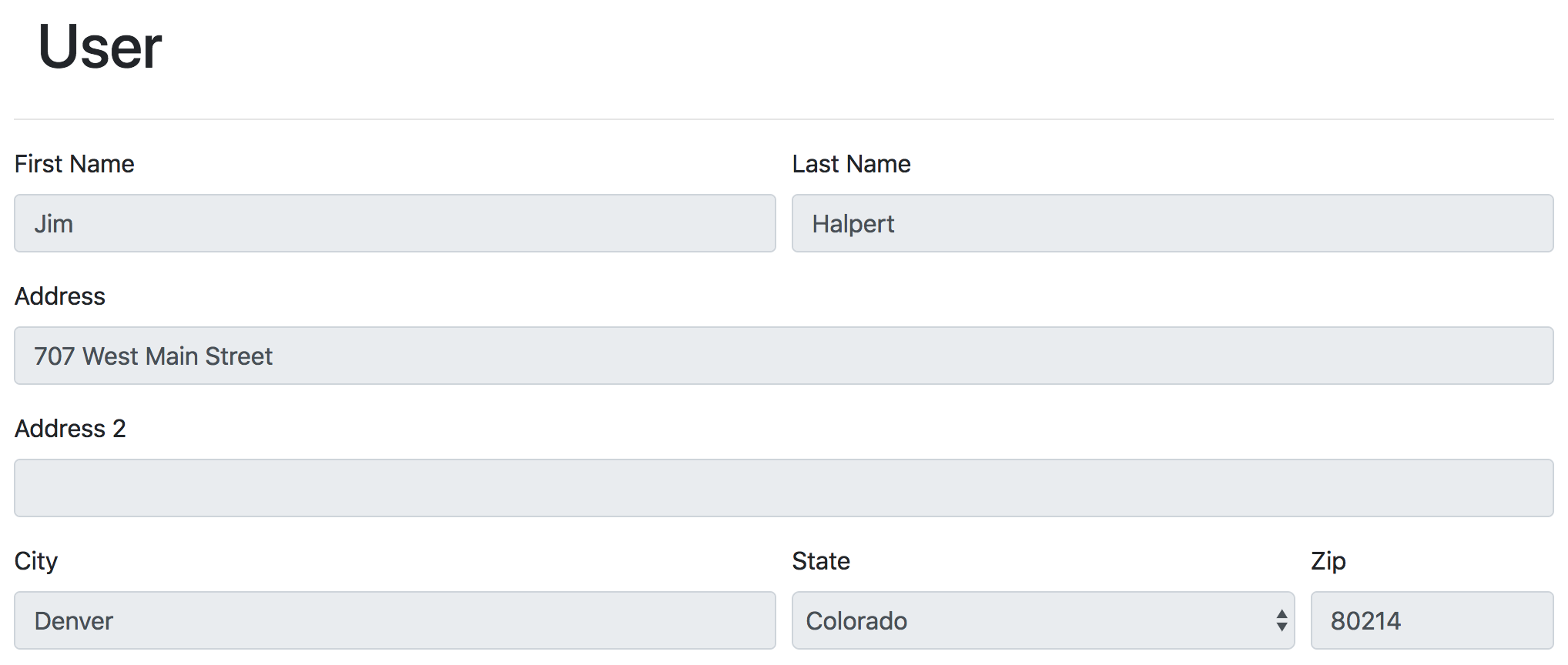Denied!
Securing Your Application with Better User Authorization
brian childress
i build things @ Capital One
that have highly-sensitive data
brian.childress@capitalone.com
-
what is authorization?
-
how to authorize
-
types of authorization
authentication & authorization
authentication
... is the process of verifying that "you are who you say you are"...
authorization
... is the process of verifying that "you are permitted to do what you are trying to do"...
authentication flow
local
client
server
POST { username: password }
Status: 200
authentication flow
Oauth / OpenId Connect
client
server
GET /authentication
Status: 200
Auth Provider
Status: 301
GET /userInfo
Response: {
"name" : "jim halpert",
"email" : "jim@email.com"
}
Response: {
" . . ."
}
Status: 200
{ JSON Web Token }
JSON Web Token (JWT) is an open standard ( RFC 7519 ) that defines a compact and self-contained way for securely transmitting information between parties as a JSON object.
[ jot ]
eyJhbGciOiJIUzI1N9.3ODkwIiwibmFtZSI6.u6aVTx2CHvo
Header
{
"alg": "HS256",
"typ": "JWT"
}
JSON web token
eyJhbGciOiJIUzI1N9.3ODkwIiwibmFtZSI6.u6aVTx2CHvo
Payload
{
"sub": "1234567890",
"name": "Jim Halpert",
"email": "jim@email.com",
"iat": 1516239022,
"exp": 1782348521
}
JSON web token
eyJhbGciOiJIUzI1N9.3ODkwIiwibmFtZSI6.u6aVTx2CHvo
Signature
HMACSHA256(header + "." + payload,pa$sw0rd)
JSON web token
Payload
{
"sub": "1234567890",
"admin": true
"name": "Jim Halpert",
"email": "jim@email.com",
"iat": 1516239022,
"exp": 1516240022,
"uid: "573hdk",
"roles": [
"manager" ,
"superAdmin"
]
}
JSON web token
Payload
{
"sub": "1234567890",
"admin": true
"name": "Jim Halpert",
"email": "jim@email.com",
"iat": 1516239022,
"exp": 1516240022,
"uid: "573hdk",
"groups": [
6,
42,
67
]
}
JSON web token
make a request
client
server
GET /users
Status: 200
Authorization: Bearer { JWT }
authentication
who are you?
authorization
what can you do?
authorization
is hard!!
types of authorization
role-based
user
role
permissions
types of authorization
role-based
| role | canRead | canEdit | canDelete |
|---|---|---|---|
| user | |||
| editor | |||
| admin |
types of authorization
role-based
users can have many roles
roles can have many permissions
permissions can be assigned to many roles
types of authorization
role-based
claims-based
user
permission
action
types of authorization
claims-based
| user | canReadProducts | canEditProducts | canDeleteProducts |
|---|---|---|---|
| bob | |||
| sue | |||
| morgan |
types of authorization
role-based
claims-based
attribute-based
policy
authorization
user
types of authorization
attribute-based
IF
THEN
editor
can edit products
types of authorization
attribute-based
IF
THEN
before 9am
can read-only
who? what?
routes
components
how do we authorize?

Example of menu
Compare user, admin
Code example fade in
<ul>
...
<li *ngIf="role === 'admin'">
<a routerLink="/admin"
routerLinkActive="active">Admin</a>
</li>
...
<li *ngIf="admin">
<a routerLink="/users"
routerLinkActive="active">Users</a>
</li>
...
</ul>
Example of menu
Compare user, admin
Code example fade in
<ul>
...
<li *ngIf="canViewAdmin || role === 'auditor' ||
role === 'superAdmin'">
<a routerLink="/admin"
routerLinkActive="active">Admin</a>
</li>
<li>
<a routerLink="/products"
routerLinkActive="active">Products</a>
</li>
...
</ul>
C
R
U
D
reate
ead
pdate
elete
C
R
U
D
authorization flow
client
server
GET /routescomponents
Status: 200
Authorization: Bearer { JWT }
Response: {
"routes" : [ ... ],
"components" : [ ... ]
}
Example of menu
Compare user, admin
Code example fade in
<ul>
...
<li>
<a routerLink="/products"
routerLinkActive="active">Products</a>
</li>
<li *ngIf="getRouteAuth('users')">
<a routerLink="/users"
routerLinkActive="active">Users</a>
</li>
...
</ul>


Authorization Service
// API Response
const routeAuth = [..{
"name": "users",
"create": true,
"read": true,
"update": true,
"delete": true
}];
// Authorization Service
let getRouteAuth = (route: string) => {
// Find a matching route authorization for provided route
const auth = routeAuth.find((obj) => { return obj.name === route; });
if (auth){
return auth.read;
}
return false;
}Authorization Service
// API Response
const routeAuth = [..{
"name": "users",
"create": true,
"read": true,
"update": true,
"delete": true
}];
// Route is the information about a specific route
canActivate(route: ActivatedRoute): boolean {
if (!this.auth.isAuthenticated() ||
!this.auth.getRouteAuth(route)) {
this.router.navigate(['login']);
return false;
}
return true;
}
route

guard


// Angular Route Guard
// API Response
const routeAuth = [..{
"name": "users",
"create": true,
"read": true,
"update": true,
"delete": true
}];
// Authorization Service
let getRouteAuth = (route: string) => {
// Find a matching route authorization for provided route
const auth = routeAuth.find((obj) => { return obj.name === route; });
if (auth){
return auth.read;
}
return false;
}

<!-- User Component -->
<form *ngIf="role === 'admin' || role === 'user'">
<div class="form-row">
<div class="form-group col-md-6">
<label for="firstName">First Name</label>
<input type="text" id="firstName" placeholder="First Name">
</div>
<div class="form-group col-md-6">
<label for="lastName">Last Name</label>
<input type="text" id="lastName" placeholder="Last Name">
</div>
</div>
<div class="form-group">
<label for="address">Address</label>
<input type="text" id="address" placeholder="1234 Main St">
</div>
<div class="form-group">
<label for="address2">Address 2</label>
<input type="text" id="address2"
placeholder="Apartment, studio, or floor">
</div>
...
<button type="submit">Update</button>
</form>
// User Role
{
"name": "userForm",
"create": false,
"read": true,
"update": true,
"delete": false
}<!-- User Component -->
<form *ngIf="auth.read">
<div class="form-row">
<div class="form-group col-md-6">
<label for="firstName">First Name</label>
<input type="text" id="firstName" placeholder="First Name"
[disabled]="!auth.create || !auth.update" *ngIf="auth.read">
</div>
<div class="form-group col-md-6">
<label for="lastName">Last Name</label>
<input type="text" id="lastName" placeholder="Last Name"
[disabled]="!auth.create || !auth.update" *ngIf="auth.read">
</div>
</div>
<div class="form-group">
<label for="address">Address</label>
<input type="text" id="address" placeholder="1234 Main St"
[disabled]="!auth.create || !auth.update" *ngIf="auth.read">
</div>
<div class="form-group">
<label for="address2">Address 2</label>
<input type="text" id="address2"
placeholder="Apartment, studio, or floor"
[disabled]="!auth.create || !auth.update" *ngIf="auth.read">
</div>
...
<button type="submit" *ngIf="auth.update">Update</button>
</form>
<div *ngIf="!auth.read">
You are not authorized to view this content. Please contact your administrator.
</div><!-- User Component -->
<form *ngIf="auth.read">
<div class="form-row">
<div class="form-group col-md-6">
<label for="firstName">First Name</label>
<input type="text" id="firstName" placeholder="First Name"
[disabled]="!auth.create || !auth.update" *ngIf="auth.read">
</div>
<div class="form-group col-md-6">
<label for="lastName">Last Name</label>
<input type="text" id="lastName" placeholder="Last Name"
[disabled]="!auth.create || !auth.update" *ngIf="auth.read">
</div>
</div>
<div class="form-group">
<label for="address">Address</label>
<input type="text" id="address" placeholder="1234 Main St"
[disabled]="!auth.create || !auth.update" *ngIf="auth.read">
</div>
<div class="form-group">
<label for="address2">Address 2</label>
<input type="text" id="address2"
placeholder="Apartment, studio, or floor"
[disabled]="!auth.create || !auth.update" *ngIf="auth.read">
</div>
...
<button type="submit" *ngIf="auth.update">Update</button>
</form>
<div *ngIf="!auth.read">
You are not authorized to view this content. Please contact your administrator.
</div><!-- User Component -->
<form *ngIf="auth.read">
<div class="form-row">
<div class="form-group col-md-6">
<label for="firstName">First Name</label>
<input type="text" id="firstName" placeholder="First Name"
[disabled]="!auth.create || !auth.update" *ngIf="auth.read">
</div>
<div class="form-group col-md-6">
<label for="lastName">Last Name</label>
<input type="text" id="lastName" placeholder="Last Name"
[disabled]="!auth.create || !auth.update" *ngIf="auth.read">
</div>
</div>
<div class="form-group">
<label for="address">Address</label>
<input type="text" id="address" placeholder="1234 Main St"
[disabled]="!auth.create || !auth.update" *ngIf="auth.read">
</div>
<div class="form-group">
<label for="address2">Address 2</label>
<input type="text" id="address2"
placeholder="Apartment, studio, or floor"
[disabled]="!auth.create || !auth.update" *ngIf="auth.read">
</div>
...
<button type="submit" *ngIf="auth.update">Update</button>
</form>
<div *ngIf="!auth.read">
You are not authorized to view this content. Please contact your administrator.
</div>
// Admin Role
{
"name": "userForm",
"create": true,
"read": true,
"update": true,
"delete": true
}
// Admin Role
{
"name": "userForm",
"create": true,
"read": true,
"update": true,
"delete": true
}
// Auditor Role
{
"name": "userForm",
"create": false,
"read": true,
"update": false,
"delete": false
}// API Response
const routeAuth = [..{
"name": "userForm",
"create": true,
"read": true,
"update": true,
"delete": true
}];
@Component({
selector: 'user-form',
templateUrl: './user-form.component.html'
})
export class UserFormComponent {
...
getData(authorization: Object){
if(authorization.read){
this.http.get('users').subscribe(response => {
// do something
});
}
}
}additional uses for CRUD-based authorization:
beta testing
system maintenance
feature rollout
a/b testing
testing
-
what is authorization?
-
authentication: who are you?
-
authorization: what can you do?
-
what is authorization?
-
types of authorization
-
role-based
-
claims-based
-
attribute-based
-
what is authorization?
-
how to authorize
-
types of authorization
-
CRUD
questions?
brian childress
brian.childress@capitalone.com
thank you!
bit.ly/auth_auth
slides and resources: